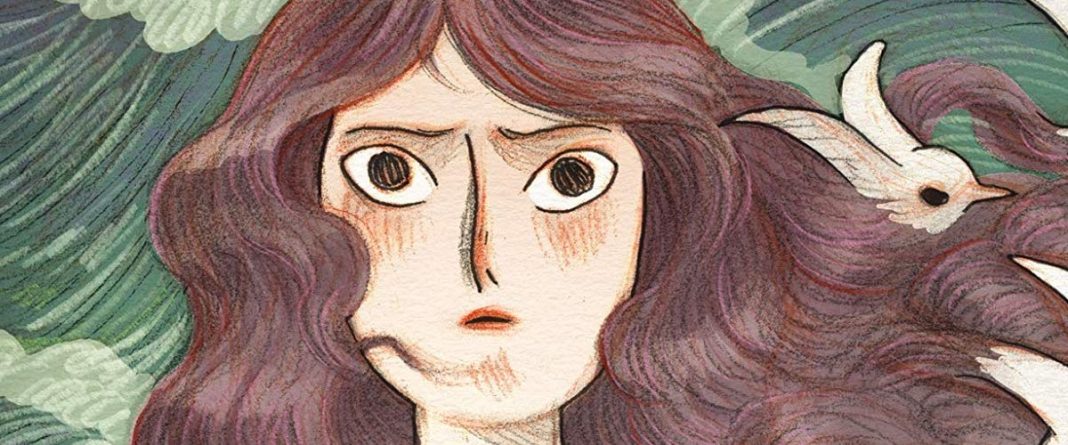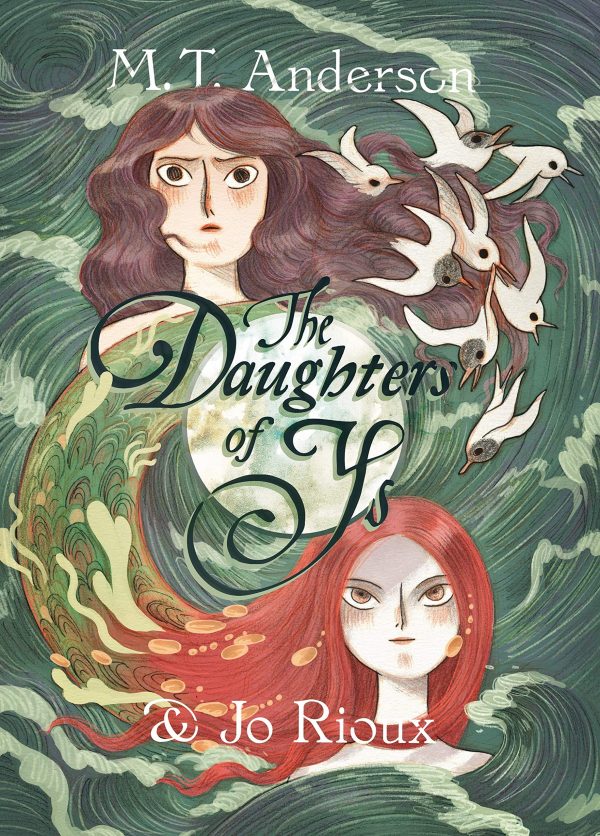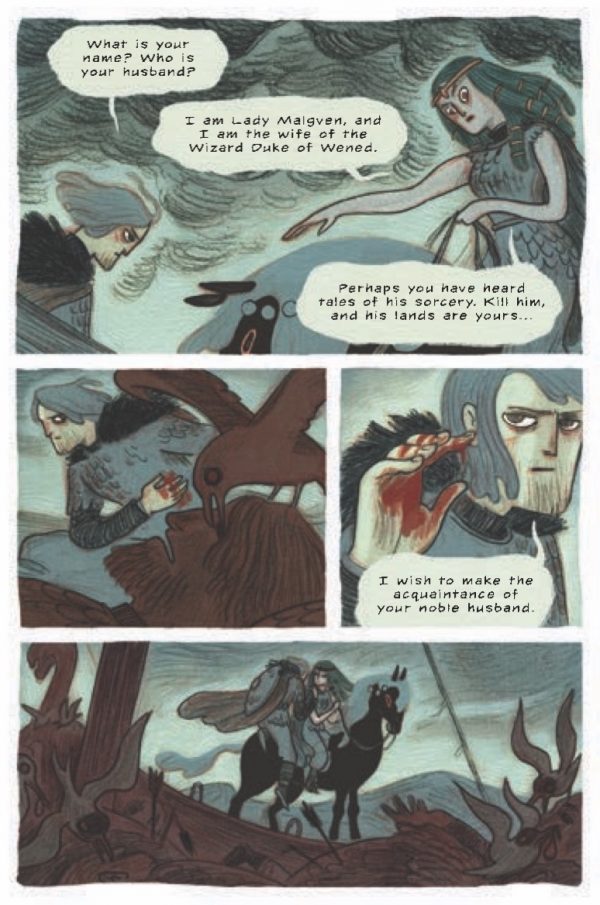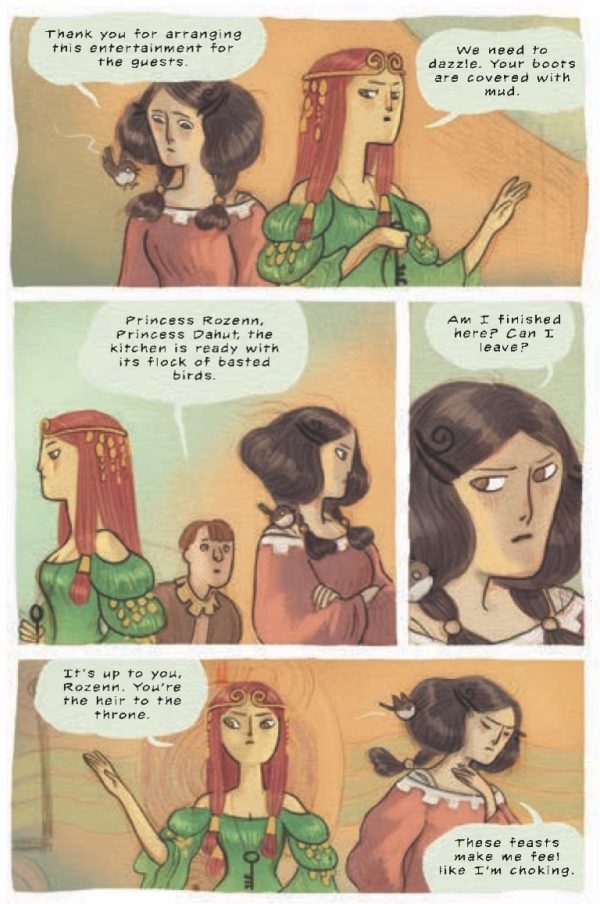The Daughters of Ys
Written by M.T. Anderson
Illustrated by Jo Rioux
First Second Books
The city of Ys is part of Breton folklore that may be familiar to some modern audiences as the focus of one of the stories in Robert W. Chambers’ The King in Yellow or the focus of Joanna Newsom’s album Ys, but it dates back much further in the darkness of history after Christianity appeared but still as it struggled to contain paganism. The 15th Century seems to be the most likely starting point for the famous story about Ys, but one of its central figures, King Gradion, appears to be older than that.
But M.T. Anderson and Jo Rioux have no time for boosting up Gradion in The Daughters of Ys. He’s had his time. Instead, the focus goes to a daughter who is part of the story tradition, Dahut, as well as another daughter, Rozenn, who isn’t in the original legends but part of the opera Le roi d’Ys by Édouard Lalo and who provides an interesting split in the themes of paganism that seep through the tale.
The Daughters of Ys isn’t trying to be faithful to the traditions, but instead, expand on parts of the legends, flesh out the characters and the history and the circumstance, and wrapping in some elements that might have become attached in one way or another to the legends as it’s been embraced and interpreted in different forms through history, and it points its finger directly at the masculine cliche of the noble warrior, the role of men in the story of civilization that involves conquest and destruction.
Gradion is the original hero of the stories as The Daughters of Ys begins, asked by a mysterious woman to kill her husband and free her. Gradion is capable of this brutal act and in return, with the understanding that Gradion marry her, the woman promises to use her magic to build him the most glorious capital city ever to exist. That happens and the walled city of Ys is created, with two daughters resulting from the marriage.
After their mother dies, the sisters don’t quite see the prospect of helping their father rule the kingdom in the same way, with Rozenn spending most of her time in the wilds surrounding the city, communing with nature and rejecting the capital. Dahut is stuck maintaining the capital and seeing to the tasks that its darker nature, retained from its magical origin, demand to keep the walls from allowing the sea to break through and flood the city, creating a new realm for the sea monster that patrols around it.
The Daughters of Ys takes some of the traditional roles in mythology and turns them on their head. Dahut is technically a villain, but her deeds that count as evil are also part of a burden that has been placed on her because of her father’s selfishness and laziness. Gradion is a King Arthur-like figure that begs for some nostalgic respect in his waning years according to tradition, but through the eyes of the reader, he’s not a weary warrior but a morally-spent fool. And Rozenn, though admirable for her rebellion, her embrace of the natural world, and her openness to learn other ways, finds that her detachment from the life she was born into makes it difficult for her to understand what her family’s subjects require of her for their own survival.
Anderson’s story on The Daughters of Ys provides an excellent vehicle for Rioux to shine. She holds back in some ways and lets the artwork be as mysterious as the story it accompanies, adding to the richness of the story and evoking its ancient origins in a successful way that her more three-dimensional style wouldn’t have worked as well with. Flattening out the art in general, offering characters with simpler features, sometimes evoking backgrounds through color rather than lines, and utilizing deep saturation of the colors to define the moments they carry, these are all aspects that she masters here. It’s a gripping adaptation of an ancient myth that reworks its themes in original ways, but I can’t imagine it being as effective without Rioux’s vision of the world it takes place in.












